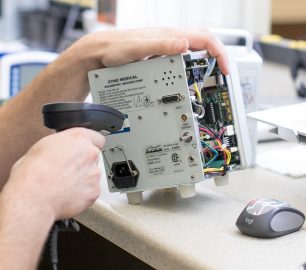As temperatures climb, so does the risk of bacterial growth. Summer heat and humidity create an ideal environment for microbes to multiply, especially in healthcare settings where vulnerable patients are being treated. Now is the time to double down on disinfection and ensure your infusion clinic maintains the highest standards of cleanliness and safety.
Hotter Days, Higher Risk
Warm, moist conditions are perfect for bacteria, viruses, and fungi to thrive. High-traffic areas, shared surfaces, and improperly stored supplies can quickly become contamination hotspots. In an infusion clinic, where patients may be immunocompromised, the consequences of lapses in hygiene can be life-threatening.
Rising Temperatures and Humidity
Warm weather and elevated humidity levels create ideal conditions for microbial growth, making consistent and thorough sterilization essential to prevent infection spread. High humidity can weaken the integrity of sterile packaging, increasing the chance of contamination.
Greater Patient Volume and Seasonal Activities
Summer months often bring higher patient visits to clinics, combined with more outdoor activities that increase exposure to pathogens. This surge highlights the need for strict sterilization protocols to ensure a safe clinical environment.
Effects on Sterility
Elevated temperatures can degrade packaging materials, compromising their protective barrier. Additionally, temperature fluctuations may cause condensation inside packages, creating moisture that fosters microbial growth and threatens sterility.
Sterilization eliminates all forms of microbial life, including bacteria, viruses, and spores, whereas disinfection reduces the number of harmful microorganisms to a safer level.
Understanding how these two methods differ and how they can work together is essential for maintaining a clean, safe environment and effectively preventing the spread of infection.
Scorching Temps, Stronger Sterilization
In an infusion clinic, sterilization is a critical process used to eliminate all forms of microbial life from instruments and equipment that come into direct contact with the bloodstream or sterile body areas.
Steps To Sterility

Cleaning
Removing any visible dirt and debris that lie on surfaces, combatted with water, detergents, or enzymatic products. Use microfiber cloths, disposable wipes, and mop heads that won’t cross-contaminate surfaces. Pay extra attention to high-touch areas such as chairs, IV poles, door handles, and restrooms.

Disinfection
Destroying most pathogenic microorganisms on medical equipment and high traffic areas. Stock up on EPA-registered hospital-grade disinfectants effective against a broad spectrum of pathogens.

Sterilization
The most rigorous form of decontamination is intended to eliminate all forms of bacterial life present on infusion equipment, including spores.
It’s important to recognize that while cleaning, disinfection, and sterilization are often mentioned together, they serve different but complementary purposes in infection control.
Essential Summer Checklist
Disinfectants
- CaviCide Disinfectant Spray
- Hypo-Chlor Spray
- Isopropyl Alcohol
- Sterile Alcohol
- Sporicidal Cleaner
Wipers
- Cleansing Towelettes
- Germicidal Disposable Wipes
- Sterile Dry Wipers
- Sterile Pre-Saturated Wipers
Prep Pads
- Alcohol Prep Pads
- Chlora Prep Applicators
- Disposable Cleaning Pads
PPE
- Bouffant Caps
- Surgical Masks
- Shoe Covers
- Sterile Gloves
- Sterile Gowns



